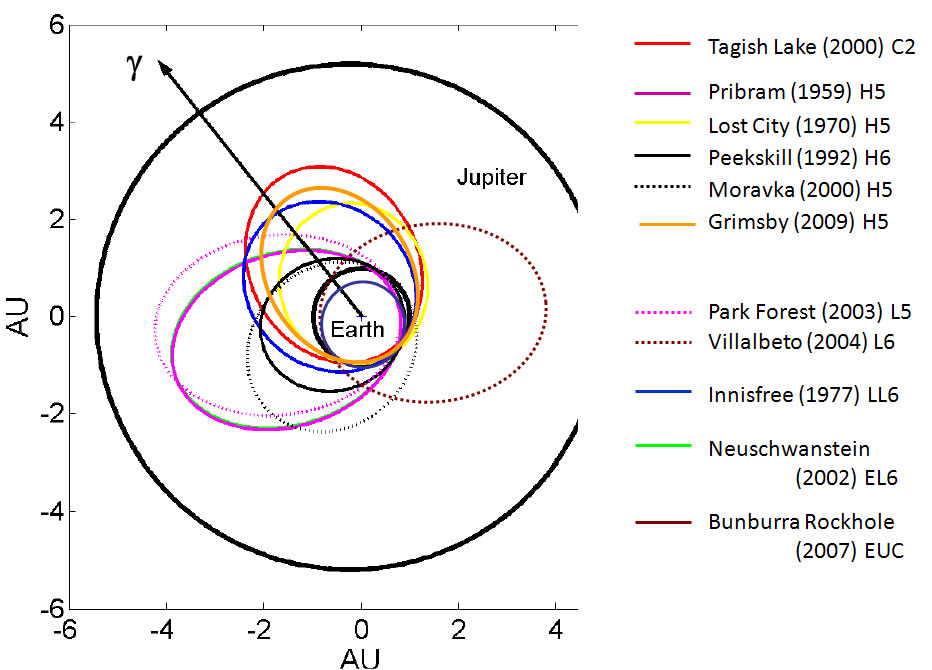Fireball Measurements
Research Projects
The best means of studying small solar system bodies is through laboratory examination of astromaterials. Such laboratory investigations provide detailed chemical and isotopic data for materials. These data are most valuable, however, if the spatial context for material is also available in much the same way as rock samples examined by geologists are most useful when the collection site/context is known. While this is possible for sample return missions (such as Stardust and comet 81P/Wild 2 or Hayabusa and asteroid Itokawa) such missions are extremely costly and are only expected to sample a few solar system bodies over the next few decades. A major thrust of our fireball research has been to reverse this paradigm - collecting samples (in the form of meteorites) which are observed to fall and then examining instrumental records of the associated fireball to reconstruct a pre-atmospheric orbit. Additionally, details of the nature of the pre-impact body can be gleaned by examining its ablation behaviour and in rare cases out of atmosphere observations.
The meteorites whose pre-atmospheric orbits are known to date are shown below:

The projects in this research theme are usually driven by specific bright fireballs for which considerable instrumental data are available and which produce meteorite falls.



